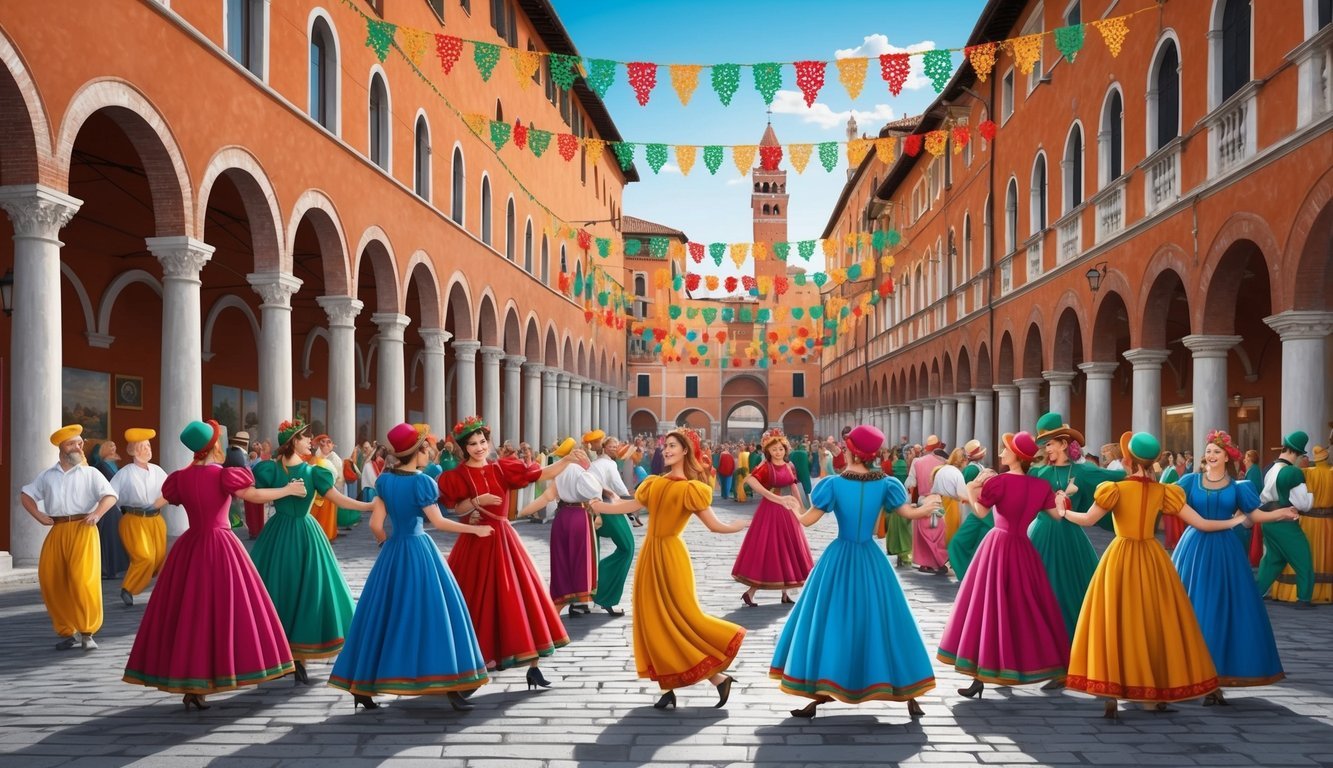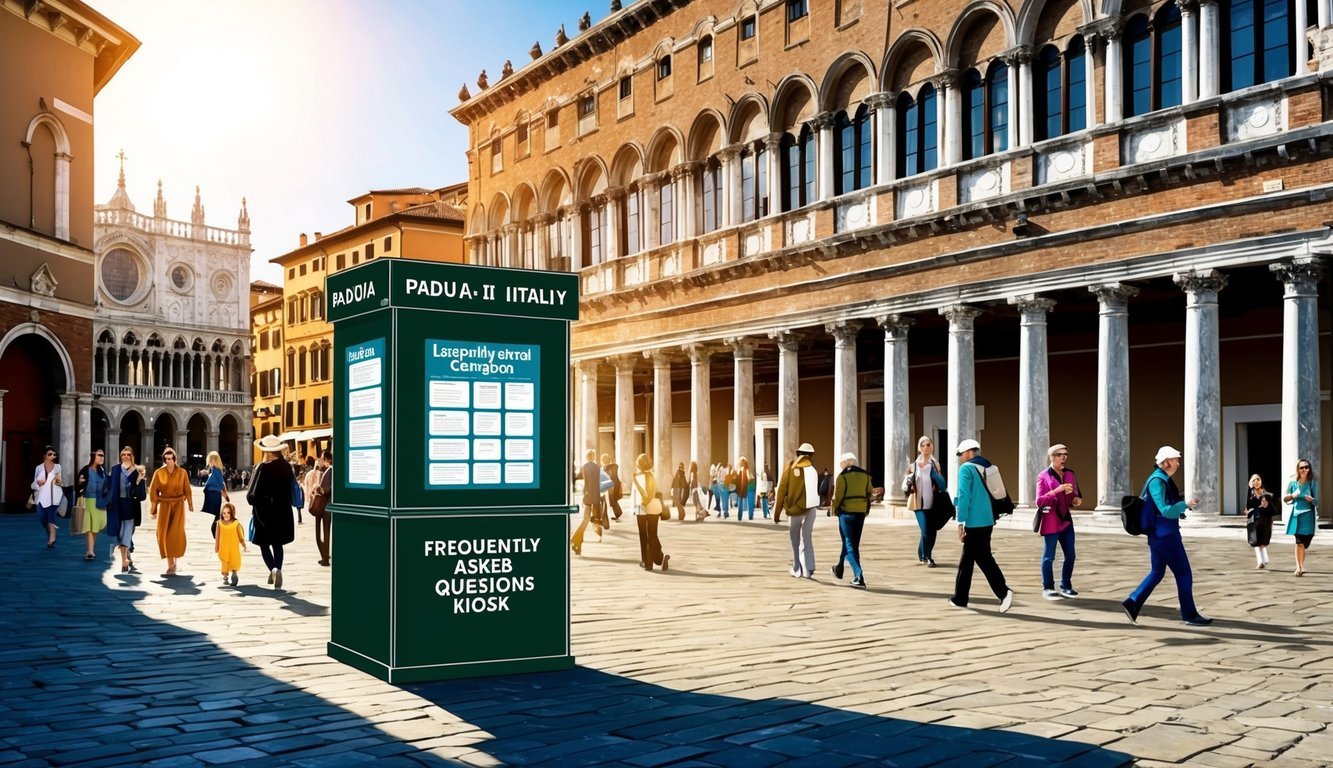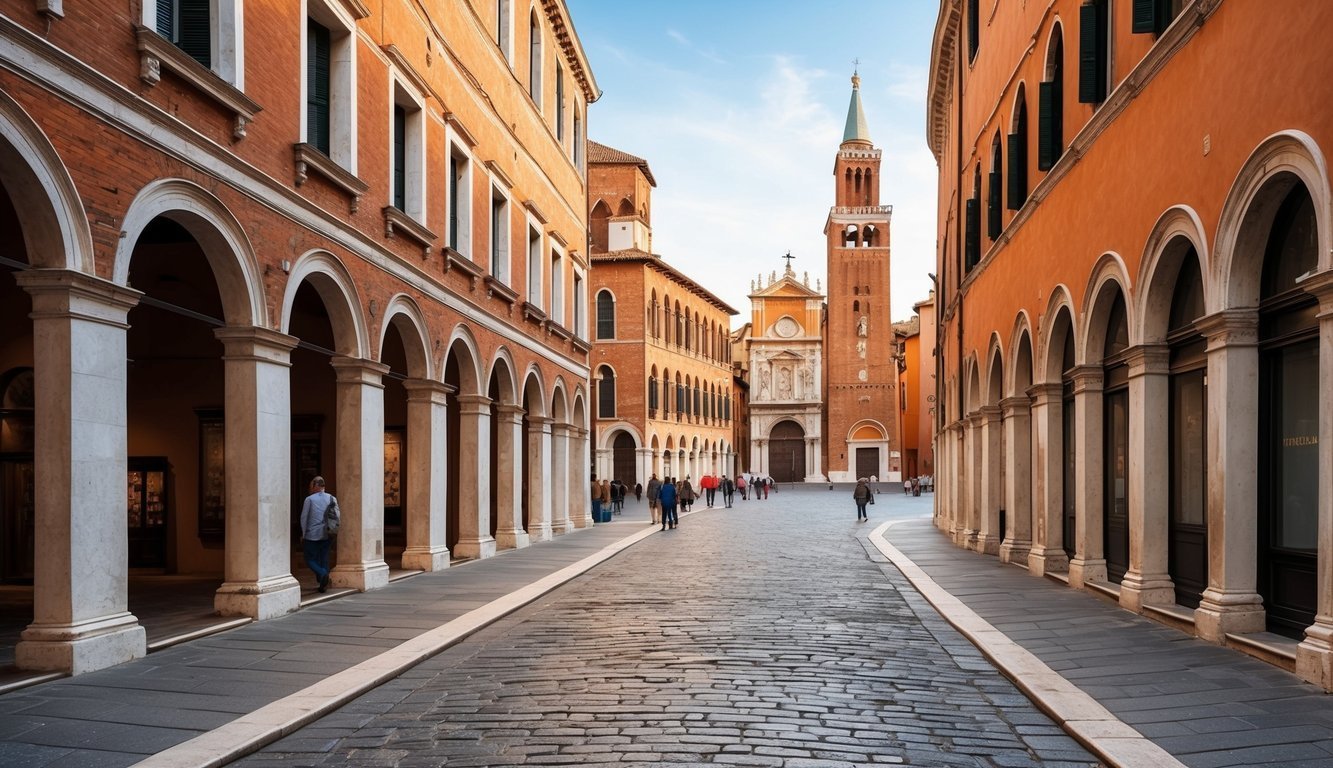Padua, Italy, is a city that often flies under the radar, but it’s bursting with history and charm. You’ll find stunning landmarks, a rich cultural heritage, and a vibrant atmosphere that truly makes Padua a hidden gem in Northern Italy.
From ancient Roman roots to a renowned university, this city offers both beauty and depth in every corner.
As you wander through its streets, you’ll encounter impressive frescoes, bustling piazzas, and serene botanical gardens.
Each site tells a story, inviting you to explore the layers of history that quietly shape this city.
Whether you are a history buff or simply seeking a tranquil spot to relax, Padua has something special for everyone.
Make sure to check out its signature events and local celebrations, which highlight the city’s lively culture.
Join the locals in enjoying the delicious cuisine and art that Padua proudly showcases.
You won’t regret diving into this unforgettable Italian experience.
Key Takeaways
- Padua boasts a rich history and significant cultural heritage.
- The city is home to many stunning landmarks and hidden gems.
- Engaging events and local celebrations add to Padua’s vibrant atmosphere.
Historical Overview
Padua has a rich and varied history that stretches back thousands of years.
You’ll find influences from ancient times through the Renaissance and into modern Italy.
This journey through time shows how Padua evolved and became a key player in Italian history.
Ancient Roots
Padua, originally known as Patavium, claims to have been founded by the Trojan prince Antenor around 1183 BC.
According to the Roman historian Livy, it was already notable by 302 BCE.
The early inhabitants were the Veneti people, who played a vital role in the region’s development.
The Romans later took control, making Patavium an important town in their empire.
Remnants of this period, like the Roman amphitheater walls, still exist today as a testament to the city’s ancient significance.
Medieval and Renaissance Periods
During the Middle Ages, Padua rose to prominence as a thriving city.
It faced challenges from various invaders like the Huns and Lombards but quickly rebuilt itself.
The 13th and 14th centuries saw Padua flourish under its own government.
The University of Padua emerged during this period, founded in 1222.
It became one of the oldest universities in Italy, attracting scholars and thinkers, including Galileo.
The city’s art and architecture flourished, featuring magnificent buildings and lively public squares.
The Risorgimento and Modern Times
The Risorgimento in the 19th century marked significant changes for Padua.
The city became a center of political movements aiming for Italian unification.
During this period, many citizens fought for their rights and contributed to the national struggle.
In World War II, Padua faced challenges as it was occupied by Nazi forces.
After the war, the city worked to rebuild and modernize, blending its historical roots with contemporary life.
Today, your experience in Padua reflects both its rich past and vibrant present.
Cultural Heritage
Padua, Italy, is rich in cultural heritage, showcasing impressive artistic traditions and delightful culinary experiences.
You’ll find the city’s history woven into its art, food, and even medicine.
Artistic Legacy
Padua’s artistic legacy is stunning, particularly its connection to the Italian Renaissance.
You can explore the incredible frescoes painted by Giotto di Bondone in the Scrovegni Chapel.
These works are not just beautiful; they are considered pioneering masterpieces of Western art.
The frescoes show Giotto’s unique approach to storytelling through vivid colors and emotional expressions.
This was a significant change from the flat, less detailed artwork of previous eras.
The innovation continues with the city housing other significant sites that reflect an artistic heritage, like the Basilica of St. Anthony.
Culinary Delights
When it comes to food, Padua has its own unique flavors.
One drink that stands out is the Aperol Spritz, a refreshing cocktail made with Aperol, Prosecco, and a splash of soda.
It’s a must-try, especially during warm afternoons as you relax at a café.
You can also savor local dishes that highlight the region’s rich agricultural practices.
Dishes like bigoli (a type of pasta) and seasonal risottos showcase fresh ingredients.
The food culture reflects Padua’s history, giving you a taste of its traditions.
Modern Medicine Origins
Padua is also famous for its contributions to modern medicine.
Founded in 1222, the University of Padua is one of the oldest universities in the world and has a strong medical program.
Here, Andreas Vesalius, a pioneer in anatomy, taught and changed how we understand the human body.
You’ll find that this legacy is not just historical.
With ongoing research and innovation, Padua remains a key player in medical advancements.
The city brings together old and new, showcasing its enduring commitment to health and knowledge.
Landmarks and Attractions
Padua is packed with stunning landmarks and attractions that reflect its rich history and vibrant culture.
From beautiful churches to lively public squares, there’s something to captivate every visitor.
Ecclesiastical Sites
One of the standout spots is the Basilica of Saint Anthony.
This stunning church is dedicated to Saint Anthony of Padua and features impressive architecture and beautiful artworks.
People from all over visit to pay their respects.
Don’t miss the Church of the Eremitani.
It’s known for its stunning frescoes and serene atmosphere.
The Scrovegni Chapel is another highlight, famous for its Giotto frescoes that tell biblical stories in breathtaking detail.
Architectural Wonders
When you walk around Padua, you can’t ignore the majestic Palazzo della Ragione.
This historic building is the largest brick building in Europe and boasts amazing frescoes and a bustling market.
Palazzo Bo, home to the University of Padua, showcases architectural brilliance.
The anatomical theater inside is a must-see, giving you a glimpse into the early days of medical education.
Museums and Galleries
The Civic Museum of Padua offers a rich collection of art and historical artifacts.
You’ll find works from notable artists and plenty of local history.
Also, check out the Orto Botanico, which is one of the oldest botanical gardens in Europe.
It’s a lovely spot to stroll while enjoying nature and learning about various plant species.
Public Squares and Markets
Piazza dei Signori serves as the cultural heart of Padua.
The atmosphere here is lively, with cafes and shops lining the square.
It’s a great place to relax and take in the surroundings.
You can also explore Piazza della Frutta and Piazza delle Erbe, which come alive with markets and vendors selling fresh produce and local goods.
These squares are perfect for mingling with locals and enjoying the vibrant Italian spirit.
Lastly, don’t miss Prato della Valle.
This is one of the largest squares in Europe, complete with beautiful statues and a scenic canal that wraps around it.
It’s an ideal spot for a leisurely walk.
Education and Research
In Padua, education and research truly shine, thanks to its historic institutions and rich scientific heritage.
You’ll find a strong emphasis on learning, especially at the University of Padua, which has a notable history and a vibrant academic community.
University of Padua
The University of Padua, founded in 1222, is one of the oldest universities in the world.
It was here that famous figures like Galileo Galilei studied and taught.
His work in physics and astronomy changed how we view the universe.
Today, the university offers a wide range of programs, including medicine, law, and the sciences.
It’s known for its strong research output across various disciplines.
The university encourages students to engage in research projects, often collaborating with local industries.
Many notable innovations have come from here, continuing the legacy of thinkers like Nicolaus Copernicus.
You can explore the university’s programs and its impact on both local and global education systems.
Botanical Garden of Padua
The Botanical Garden of Padua, established in 1545, is a UNESCO World Heritage site and one of the oldest botanical gardens in the world.
It’s not just a pretty place; it’s a center for research in plant biology and ecology.
You can stroll through its many sections, which include medicinal plants and diverse ecosystems.
The garden serves as a living laboratory for students and researchers alike, supporting studies related to conservation and environmental science.
It’s a great spot to learn about plants that have shaped medicine and agriculture.
The garden hosts workshops and events, making it a hub of education for anyone interested in botany or the natural sciences.
Exploring Padua
Padua is a city full of history, culture, and a unique vibe that makes exploring it a delightful experience.
From guided tours to enjoyable day trips and local shopping, you will find plenty to keep your itinerary full.
Guided Tours
When you visit Padua, consider joining a guided tour to dive deeper into its rich history.
You can explore iconic sites like the Basilica of St. Anthony, known for its stunning architecture and important relics.
Tours often include visits to the Scrovegni Chapel, famous for Giotto’s breathtaking frescoes.
Knowledgeable guides will share stories that bring the artwork and history to life.
This is a great way to navigate the city’s treasures without missing anything.
Day tours may also be available, offering a chance to see nearby attractions like the Euganean Hills.
These tours let you experience the landscapes and local culture beyond the city limits.
Day Trips and Nearby Cities
Padua is an excellent base for day trips to nearby cities.
Venice is just about 26 miles away, making it an easy half-hour train ride.
Enjoy wandering the canals, visiting St. Mark’s Basilica, and exploring art galleries.
Another great option is Vicenza, famous for its stunning Palladian architecture.
The trip is about 30 miles and takes about 50 minutes by train.
You can see Villa La Rotonda, a remarkable piece designed by Andrea Palladio.
You might also consider a trip to the Euganean Hills.
This area is perfect for hiking and experiencing beautiful landscapes.
Don’t forget to check out the local spas for a relaxing afternoon.
Shopping and Markets
When it’s time to shop, Padua offers a mix of modern and traditional options.
Explore local markets like the one at Prato della Valle.
Here, you can find fresh produce and handmade goods.
The city center has a variety of shops, from trendy boutiques to vintage stores.
You’ll come across Caffè Pedrocchi, a historic café where you can take a break and enjoy a pastry.
Looking for unique souvenirs? Check out pottery, textiles, and local wines that showcase the region’s craftsmanship.
Shopping in Padua is a fun way to bring a piece of Italy back home.
Navigating Waterways
Padua has beautiful waterways, like the Brenta River and Brenta Canal, that you can explore.
A boat tour along these canals can give you a unique perspective of the city.
As you glide through the waters, you’ll see charming villas and lush gardens.
This is a peaceful and scenic way to spend your afternoon.
You can also rent a small boat if you prefer to navigate at your own pace.
Keep an eye out for various wildlife along the canal and enjoy the tranquillity that this mode of travel offers.
Exploring the waterways adds a special touch to your Padua experience.
Signature Events and Celebrations

Padua bursts with energy through its vibrant events and celebrations.
From festivals that highlight local culture to seasonal activities that engage residents and visitors alike, there’s always something happening in this historic city.
Festivals and Public Holidays
One of the biggest events in Padua is the feast of Saint Anthony, celebrated each June.
This festival honors Saint Anthony of Padua, who is one of the city’s most beloved figures.
During this time, locals gather for religious ceremonies at the Tomb of the Saint, located at the Basilica di Sant’Antonio.
You can join the crowd for a special procession and enjoy local foods at the nearby stalls.
Another key celebration is Carnevale.
This lively festival takes place in February, just before Lent.
Colorful parades, masked balls, and street performances fill the city, bringing cheerful chaos to the streets.
Be sure to check out the costumes, as they can be quite elaborate!
Seasonal Activities
In summer, Padua comes alive with outdoor concerts and cultural events.
Many parks become venues for live music, showcasing both local and international artists.
Venues like the Gran Teatro Geox host performances that you won’t want to miss.
Fall is perfect for exploring the local markets.
You can find seasonal produce and artisanal goods.
Plus, the scenic backdrop of autumn leaves adds charm to your shopping experience.
Uncovering Hidden Gems
Padua is full of less-known attractions that showcase its rich history and culture.
From ancient sites to hidden art, there’s plenty to explore beyond the usual tourist spots.
Uncharted Historic Spots
One of the must-see places is the Abbey of Santa Giustina.
This stunning basilica dates back to the 5th century.
It’s one of the oldest churches in Padua, housing beautiful frescoes and an impressive altar.
Take time to walk through its peaceful grounds.
Don’t miss the Clock Tower in Piazza dei Signori.
While it may look unassuming, it offers a fascinating glimpse into Padua’s medieval past.
The tower, built in the 13th century, features a unique astronomical clock that displays celestial movements.
As you wander, keep an eye out for historic shops tucked away in narrow streets.
These shops are filled with local goods, crafts, and delicious food.
They tell stories of Padua’s history and charm.
Art and Restoration
When it comes to art, Padua has stunning hidden gems.
The efforts in restoration here are noteworthy.
Many stunning frescoes from renowned artists like Giotto have been carefully preserved.
You can find these works in various churches and galleries around the city.
Check out the various art exhibitions happening throughout the year.
Many of these feature local as well as international artists.
They keep the spirit of creativity alive in the city.
Street art also adds a modern twist.
As you stroll the streets, look for colorful murals that showcase local talent.
These artistic expressions add vibrancy to Padua’s already rich cultural scene.
Frequently Asked Questions

When planning your trip to Padua, you might have some questions.
This section covers what makes Padua special, how to get there from Venice, expected costs, and must-see sights.
What’s Padua best known for?
Padua is famous for its rich history, stunning art, and beautiful architecture.
The city is home to one of the oldest universities in Europe and the impressive Basilica di Sant’Antonio.
You’ll also find incredible frescoes by Giotto in the Scrovegni Chapel.
How can I reach Padua from Venice?
Getting to Padua from Venice is easy.
You can take a direct train, which only takes about 30 minutes.
Buses are another option and are quite affordable, though they may take a bit longer.
Can you give me an idea of the cost to visit Padua?
Visiting Padua can be very budget-friendly.
You might spend around €50 to €100 per day, depending on your choices for food, attractions, and transport.
Entrance fees for popular sites are usually around €10 to €15.
How long should I plan to stay when visiting Padua?
A weekend is a good amount of time to explore Padua.
You can see the main sights and soak up the local vibe in about two to three days.
This gives you enough time to enjoy the city without feeling rushed.
Why do people say Padua is a must-visit?
Padua offers a unique mix of history, culture, and charm.
Its beautiful squares, lively atmosphere, and the blend of ancient and modern sights make it a captivating destination.
Many visitors fall in love with its welcoming feel.
What are the top sights in Padua for tourists?
Some top sights include the Scrovegni Chapel, the Basilica di Sant’Antonio, and the historic University of Padua.
You should also check out Prato della Valle, which is one of the largest squares in Europe, and stroll around the vibrant city center.

